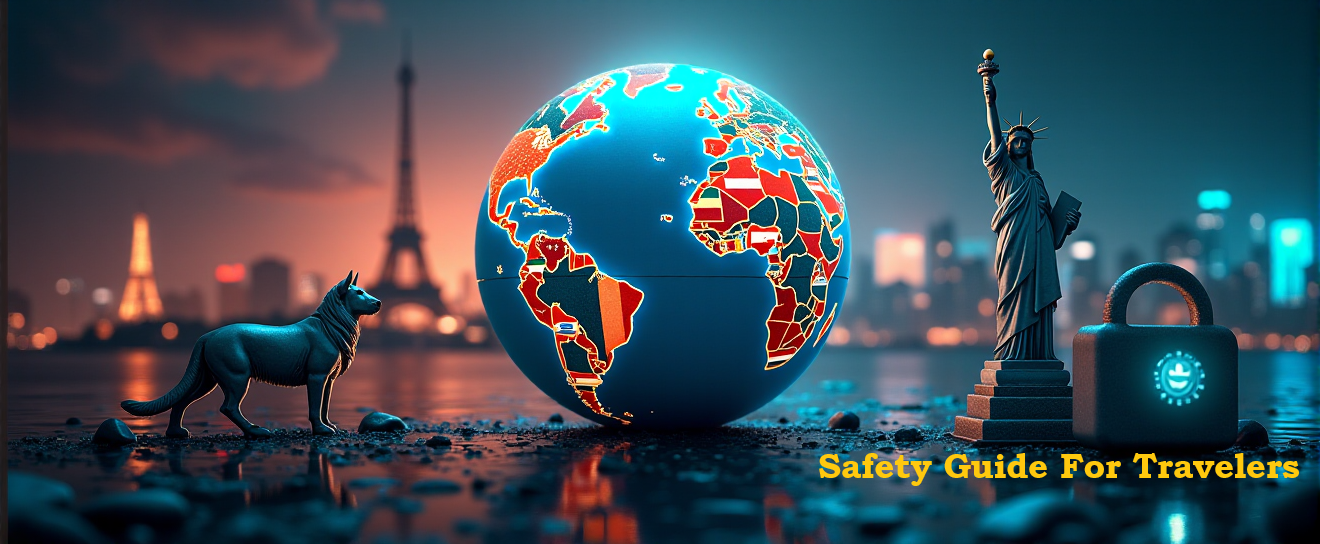Traveling to Bolivia offers a unique opportunity to explore its rich culture and stunning landscapes, but it also comes with specific safety concerns that travelers should be aware of. This article outlines essential safety aspects, tips, common scams, tourist traps, and location-specific safety examples to help ensure a safe and enjoyable trip.
General Safety Overview
Bolivia is known for its breathtaking destinations, including La Paz, Salar de Uyuni, and Lake Titicaca. However, crime rates can be higher in urban areas, particularly against tourists. Petty crimes like pickpocketing and scams are prevalent, especially in crowded places. Travelers should exercise caution and remain vigilant.
Key Safety Tips
- Stay Aware of Your Surroundings: Always be conscious of your environment, especially in busy tourist areas.
- Use Reputable Transportation: Opt for registered taxis or rideshare apps instead of hailing random cabs on the street.
- Limit Night Travel: Avoid walking alone at night and be cautious when using public transport after dark.
- Secure Your Belongings: Keep valuables close and avoid displaying expensive items like cameras or jewelry.
- Learn Basic Spanish: Knowing a few phrases can help you navigate situations more effectively and deter scammers.
Common Scams
Travelers in Bolivia should be aware of several scams that frequently target tourists:
1. Fake Police Officers
A prevalent scam involves individuals posing as police officers who approach tourists under the pretense of conducting a check. They may claim that you need to accompany them to a police station for verification, often leading you into a taxi driven by an accomplice. This taxi then takes you to a secluded area where you may be robbed or coerced into withdrawing money from an ATM. Travelers should remember that under Bolivian law, there is no obligation to accompany someone claiming to be a police officer unless they have a formal written request from a judge
2. The Helpful Local
This scam involves a seemingly helpful local who offers assistance but leads you to a taxi that is part of the scam. Once in the taxi, accomplices may join and rob you at an isolated location.
3. Spilled Substance Scam
A common tactic where someone spills something on you to distract you while an accomplice steals your belongings. If someone spills something on you, manage the cleanup yourself.
4. Express Kidnapping
This scam involves criminals who may force victims into a vehicle and demand immediate cash withdrawals from ATMs or contact friends/family for ransom amounts. Express kidnappings often involve criminal taxi drivers who pick up victims and then stop to collect accomplices before driving to an isolated area
5. ATM and Credit Card Fraud
Travelers should be cautious when using ATMs in La Paz, as there have been reports of skimming devices attached to machines and individuals watching over shoulders while PINs are entered. It is advisable to use ATMs located in well-lit areas or inside banks, cover the keypad when entering your PIN, and regularly check bank statements for unauthorized transactions
6. Unauthorized Taxi Drivers
Unauthorized taxi drivers frequently operate near popular tourist sites, offering rides at discounted rates. These drivers may not have proper licenses and can pose safety risks. To avoid this scam, it is recommended to use registered taxi services or rideshare apps that ensure drivers are licensed and insured
7. Fake Tour Package Scam
Tourists have reported being sold fake tour packages by unauthorized vendors along the boardwalk in La Paz. These vendors offer attractive deals for excursions but fail to deliver when tourists show up for their booked activities. The La Paz Director of Municipal Tourism has acknowledged this issue and is working on implementing a permitting process to regulate these vendors. Until then, tourists are advised to purchase tour packages only from official ticket booths or reputable companies
8. Petty Theft And Pickpocketing
Petty crime, such as pickpocketing and purse snatching, is common in La Paz, especially in crowded tourist areas and public transportation. Criminals often work in groups, using distractions—like staging a fight or spilling something on you—to facilitate theft. It’s essential to keep valuables secure and be aware of your surroundings at all times
Tourist Traps
While exploring Bolivia, be cautious of certain tourist traps that can lead to overcharging or unsafe situations:
- Unlicensed Taxis: Always use reputable taxi services or rideshare apps; unlicensed drivers may charge exorbitant fares or engage in criminal activities.
- Street Vendors: Be wary of vendors selling tours or tickets at discounted rates; it’s safer to book through established companies or official booths.
- Crowded Markets: While markets can be vibrant and fun to explore, they are also prime locations for pickpockets.
Location-Specific Safety Examples
La Paz
La Paz is a bustling city with unique attractions but also notable safety concerns:
- Nightlife Risks: Avoid going out alone at night; incidents of robbery and assault have been reported near bars and clubs.
- Scams at Tourist Sites: Be cautious at popular viewpoints like Mirador Killi Killi where scams involving fake police have been reported.
Santa Cruz
As Bolivia’s largest city, Santa Cruz has its own set of challenges:
- Violent Crime: Reports of violent crime have increased in certain neighborhoods; stay informed about safe areas before venturing out.
- Public Transport Caution: Use only registered taxis or rideshare services when traveling around the city.
Salar de Uyuni
While the salt flats are breathtaking, travelers should be aware:
- Tour Operator Reliability: Research tour operators thoroughly before booking trips; not all prioritize safety and customer care.
- Weather Conditions: Prepare for extreme weather changes; bring appropriate gear for both hot days and cold nights.
Bolivia is a captivating destination with much to offer travelers willing to explore its landscapes and culture. However, understanding the safety landscape is crucial for a secure experience. By staying informed about common scams, practicing vigilance in crowded areas, and using reputable services, travelers can significantly reduce their risk while enjoying everything Bolivia has to offer. Always trust your instincts—if something feels off, it’s best to err on the side of caution.
Explore Bolivia Further
- 50 Historical Places To Visit In Bolivia, South America
- Bolivia – Common Misconceptions
- Bolivia [Country Info]
- Currency Guide – Bolivia
- Essential Travel Tips for Bolivia
- Geographical Regions of Bolivia
- Language Learning Guide for Travelers to Spanish-Speaking Countries
- List Of Countries Where Spanish Is An Official Language
- Popular Cities To Visit In Bolivia, South America
- Popular Foods In Bolivia
- Popular Museums To Visit In Bolivia
- Safety Guide For Travelers – Bolivia
- Top 50 Things To Do In Bolivia
- What Languages Are Spoken In Bolivia?


![Poland [Country Info]](https://globleo.com/wp-content/uploads/2024/11/flag_of_the_country_Poland_PL.png)
![Qatar [Country Info]](https://globleo.com/wp-content/uploads/2024/11/flag_of_the_country_Qatar_QA.png)